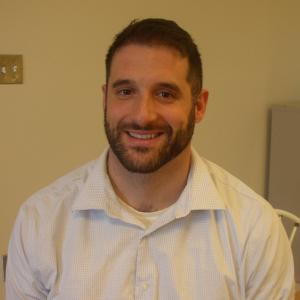‘The problems are bigger than the school’: Midcoast educators tackle increase in dysregulated behavior

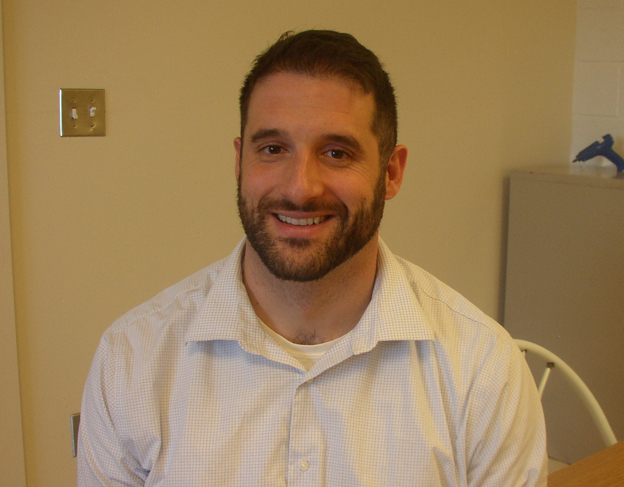 St. George Community School Superintendent Mike Felton (Photo courtesy St. George Dragon newsletter)
St. George Community School Superintendent Mike Felton (Photo courtesy St. George Dragon newsletter)
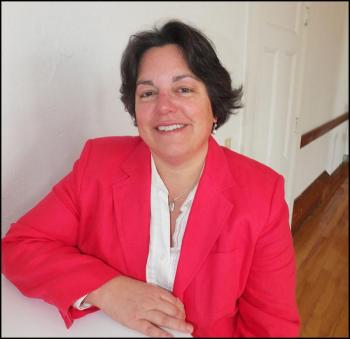 School Administrative District 28 Superintendent Maria Libby. (Photo by Chris Wolf)
School Administrative District 28 Superintendent Maria Libby. (Photo by Chris Wolf)
 RSU 40 Assistant Superintendent Christina Wotton and Tilla, the therapy dog, at Medomak Middle School. (Photo courtesy RSU 40)
RSU 40 Assistant Superintendent Christina Wotton and Tilla, the therapy dog, at Medomak Middle School. (Photo courtesy RSU 40)


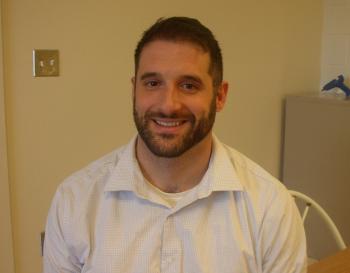 St. George Community School Superintendent Mike Felton (Photo courtesy St. George Dragon newsletter)
St. George Community School Superintendent Mike Felton (Photo courtesy St. George Dragon newsletter)
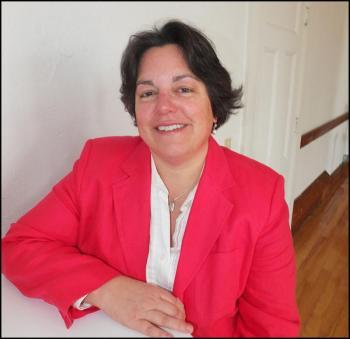 School Administrative District 28 Superintendent Maria Libby. (Photo by Chris Wolf)
School Administrative District 28 Superintendent Maria Libby. (Photo by Chris Wolf)
 RSU 40 Assistant Superintendent Christina Wotton and Tilla, the therapy dog, at Medomak Middle School. (Photo courtesy RSU 40)
RSU 40 Assistant Superintendent Christina Wotton and Tilla, the therapy dog, at Medomak Middle School. (Photo courtesy RSU 40)

MIDCOAST — A disturbing trend of students, especially in younger grades, exhibiting out-of-control behavior has increasingly unsettled schools in recent years, to the point that superintendents now share coping strategies. School boards have been looped into conversations, as staff defines the problem and shapes solutions.
In the Midcoast, principals, teachers and superintendents say the problem is across the country, if not worldwide. Emotion regulation has been cited as one of the fastest growing studies of psychology, and articles pop up across media with such headlines as, “How do we regulate emotions....” or “How do children learn to regulate emotions.”
While there is no singular cause, educators agree that acute behavioral problems have increased from affecting just a handful.
“Where we used to have one student whose behavior got to an extreme level, there are now 10 to 15 students,” said Maria Libby, who is superintendent for School Administrative District 28 (Camden-Rockport K-8) and Five Town CSD (Camden Hills Regional High School). She manages two school districts with more than 1,400 students.

(Photo by Chris Wolf)
Christina Wotton, who is assistant superintendent for RSU 40, which educates approximately 1,900 students in pre-K-12 in Friendship, Union, Waldoboro, Warren and Washington, agrees.
“I think all schools have seen an increase in unexpected/unwanted behaviors,” she said. “Each child is different, but we see students at very young ages who are unable to come to school ready to learn.”
This is not to say that student bodies are alarmingly out of control; in fact, one fifth grade teacher commented on how polite and considerate students are these days, in contrast to a decade ago. But something deeper is affecting society, and by default, children and their education.
And it is an issue that educators hope the community steps forward to help address.
“I think the broader community needs to come together, stop pointing fingers, blaming each other for all of our problems and put our children first,” said Wotton. “We have had up to 26 homeless children in our district this school year. This is a problem. We need to stop making more requirements for schools to follow and really stop and think about how we are using our time, and make sure it’s focused on helping our students grow both academically and behaviorally.”
As of last November, Camden-Rockport Elementary School reported 174 incidents involving students in kindergarten through grade four, with 99 of them classified as major incidents.
The trend, according to educators, goes beyond disruptive outbursts that most adults remember from their own school days. Why are some some children screaming, hitting and breaking objects? Why are some even older students running off of school grounds (necessitating calls to local police departments for help).
“We used to take it for granted that children showed up at the school door and had most social skills to get along with each other, and had self control,” said Libby, in a conversation in late autumn.
She talked with the SAD 28 school board about it in October.
The number of students exhibiting dysregulated behavior, “is on the rise and presenting an incredibly difficult challenge for public schools, ours included,” said Libby.
She outlined the strain on school staff, despite the number of nurses, social workers, school counselors, principal and assistant principals, and school psychologists, as well as ed techs, sequel care and programs.
“All of these resources are not enough to truly manage the depth of the issues we face,” she said. “Public schools were designed for education, not behavior treatment centers. It is a mounting crisis in our country.”
As outlined by the National Institute of Mental Health: “Disruptive mood dysregulation disorder (DMDD) is a childhood condition of extreme irritability, anger, and frequent, intense temper outbursts. DMDD symptoms go beyond a being a ‘moody’ child—children with DMDD experience severe impairment that requires clinical attention. DMDD is a fairly new diagnosis, appearing for the first time in the Diagnostic and Statistical Manual of Mental Disorders (DSM-5), published in 2013.”
Problem defined, problem addressed
“It’s not about bouncing off the walls,” said St. George Community School Superintendent Mike Felton said. “It’s aggressive behavior, inappropriate language, aggression to staff and other students. I’m not talking about the kid who has had a hard time focusing. There are a number of young students coming in with severe needs and behavior.”
The St. George Community K-8 School, in Tenants Harbor has received academic accolades. It was chosen in 2019 as the School of the Year by the Maine Environmental Education Association for its well-regarded learning opportunities for students. The Maine Community Foundation commended its Makerspace Initiative, which encourages students to design and engineer with 3D printers, laser cutters, CNC machines and robotics.

Like SAD 28, however, there has been an increase of challenging behaviors at St. George Community School, with its enrollment of 192.
“I think most, if not all, schools are experiencing an upsurge in students with severe behaviors and are working to develop programs to meet their needs,” Felton said.
There are common stressors in all Midcoast communities, which affect families and children: The sharp distinction between wealth and poverty. An economy that depends on seasonal tourism employment. The prevalence of domestic, child, elder and animal abuse. An opioid epidemic.
Knox County has been hit hard by the opioid crisis, “which has to be affecting our kids,” said Libby.
“There are several things that come to mind when I think about the root causes of behavior,” said Wotton. “The opioid problems in our area, increasing expectations of our youth, the increase in mental health issues and lack of family support. The bottom line is stress. When families are stressed, it trickles down to their children who enter school with these tensions. Teachers then have the responsibility of educating children who are overly stressed and often have their own personal struggles, which can compound the level of stress for all. I don’t know any families who don’t have stress.”
And Felton, in St. George, sees that families with limited resources have a harder time adapting to stress.
But, he added, “we have to be careful not to group people into categories.”
He is committed to the school’s mission, “to do whatever it takes to ensure that every single student thrives and, as a school-community, to contribute to the Town of St. George.”
At Camden-Rockport Elementary School, in Rockport, teachers annually adorn a paper Christmas tree with written gift wishes. The wishes are there for students who need mittens, coats, socks, hats, or perhaps even a holiday gift. That tree, a visual wish list, reflects a community of teachers that knows that even with wealthy demographics there are many students living near or below the poverty line.
They may come to school hungry for a solid hot meal, hungry for emotional support, a hug, a word of encouragement.
There are also students who spend much of their time in front of screens, or listening to home battles, or watching their parents drop behind a haze of opiates and alcohol.
Then, there is the opposite end of the spectrum, with parents who hover, micromanaging and intervening in their child’s navigation of the world, breeding a culture of irresponsibility and lack of accountability for one’s actions.
Are environmental factors affecting the mind and body? Growth hormones, antibiotics in meat, too much screen time and radio waves bombarding the body?
Are the lives of children so structured now with lessons, screen games and activities that there is little time for a pick-up wiffle ball game, playing with friends in the neighborhood, time alone with the imagination? (See the New York Times article: Do You Really ‘See’ Your Child? Helicopter parenting has become the American norm, but it may not be the best way to connect with our kids.)
Are some teachers under-equipped themselves with regulating their own emotions, and unwittingly escalate confrontations?
“I think another contributing factor is a lack of attention in our society to supporting children and parents from birth to age 5,” said Libby. “I hear of funding cuts for mental health services, lack of funding for Child Development Service, low paying wages for caregivers, etc. Many other countries put money into supporting young families and young children, with extended paid maternity leaves, superb health care, and other supports. I think this is also a contributing factor to some of the issues we are seeing in schools.”
For Superintendent Felton, the causes are multiple and varied.
“We see this growing and we see the needs,” said Felton. “How all the dots connect is a puzzle.”
But his job is not to figure out all the reasons why communities are confronting this trend. His job is to help students be feel safe and be ready to engage in learning.
“We focus on students’ academic growth, character development, and health/wellness,” he said. “We recognize that health/wellness, which we define as students’ physical and mental health, social-emotional well-being, and food security, is a prerequisite for academic growth and character development.”
And in that regard, St. George has stepped up with its own coping strategies, as has SAD 28, and RSU 40. Their programmatic approaches are similar, as is their appeal to the larger community to help.
Moving forward
After defining the problem, Camden-Rockport Elementary School Principal Chris Walker-Spencer and Valerie Mattes introduced at a November SAD 28 board meeting the concept of a calming room.
The goal of the calming room would be to give teachers time and space to respond to the child, “in real time.”
Such a room would provide a space, “where students would be able to go to calm down or learn self-regulation strategies and then return to class with minimal disruption to their day,” according to meeting minutes. “For minor incidents, visiting the calming room would be a more positive intervention than being sent the principal’s office.”
That calming room idea has been implemented at Miles Lane Elementary School in Bucksport, and which SAD 28 teachers and staff visited last fall.
At RSU 40, with its five elementary schools, one middle school and one high school, a team meets twice a month with representatives from every district school to talk about social and emotional learning.
The elementary/middle schools, of which there are seven, use “Positive Behavior Intervention Supports,” said Wotton. They are in the beginning stages of a multi-tiered behavioral program, part of which outlines expectations to students in a positive environment.
Medomak Valley High School, likewise, is focusing on understanding how adverse childhood experiences affect students.
“I believe that focusing on knowing our students and families is the best way to respond to behavior issues,” she said. “Having strong relationships and building on a student’s strength is how we can improve their behaviors. We know that punishment doesn’t change behavior, which doesn’t mean we don’t have consequences, or that students aren’t still suspended, we just know we have to do far more to really make a change.”
St. George Community School has implemented its own Positive Behavioral Interventions and Supports system, hired a social worker and a school-wide behavior interventionist, piloted Social Emotional Learning curriculum in the younger grades, and added programs and staff to support students with severe behavioral and emotional needs.
“This has required a substantial investment of time, staff, and funding by the school, town and taxpayers,” said Felton.
And, he said, the St. George community has stepped up.
The school collaborates with the St. George Community Development Corporation, a nonprofit that, according to its mission statement, leads and funds, “innovative projects that enhance the community’s resiliency by supporting community and economic development, developing workforce housing, expanding educational opportunities, and increasing access to healthcare.”
“This is the role of public schools,” said Felton. “To be part of the larger community. The problems are bigger than the school.”
He said the partnership with the nonprofit has strengthened the effort to help families, “get what they need — winter clothing and food security.”
"What gives me hope is that our whole community is working together to figure this out and care for our kids, year-round and seasonal residents, people who have lived in town for generations and people who have just moved to St. George, town government, as well as local businesses, organizations, and nonprofits,” he said.

Mindfulness
In RSU 40, there is also an emphasis on understanding the science behind the effect of stress and trauma on the brain.
The six-week course on mindfulness (self awareness, focus, empathy) in education is offered to staff four times a year to help teachers develop classroom practices. Part of that focuses on enhancing emotional regulation, and teaching those strategies to students, and to teachers.
“It’s important to have clear expectations for students and to reteach the expected behaviors when we are not seeing them,” said Wotton. “We try to explain it as if you have a student who isn’t learning to read. We don’t continue to expect them to know how to read a novel without support. We have to break down the steps and keep trying. Behavior is the same thing. There is no one way to teach any child to do anything and every child is different. So educators must really get to know their students and be willing to keep trying, think outside the box and really focus on each child’s strengths.”
This rise in numbers of children with extra needs comes with a cost to taxpayers. Counselors and psychiatrists and social workers to work with families, and schools contract with them for individualized “wrap-around” plans.
But there are only so many trained support professionals in the Midcoast. Libby observed at the Oct. 19 SAD 28 board meeting that there is a lack of service providers, such as OT, PT, psychiatric in the area.
And schools have a hard time, “filling support service positions... because people would rather be consultants where they can charge a premium knowing the schools are required to provide the service and the limited area providers are in high demand,” the board minutes read.
At the SAD 28 board meeting, Libby said: “We are financially responsible to provide services for all students and special education funding can be a significant percentage of a school’s budget. In all three schools in our two districts, we have strong autism and behavior programs. Fifteen years ago, we did not have all the specialized programs we do now. We used to have to send students out of district for day treatment,” the board minutes reflected.
“Maria stated that more students are entering elementary school who need special services,” the minutes continued. “For example, 10 years ago we had one student with significant behavior issue who needed day treatment. This year we are at capacity in the middle school with 10 students.”
At RSU 40, the district received a federal AWARE grant from the Substance Abuse and Mental Health Administration through the Maine Department of Education, which had been awarded $5 million for five years to address behavioral issues.
The goal of the grant, of which RSU 40 receives $200,000 each year for five years, is to help schools and communities coordinate a unified response, and to increase mental health screening.
“It is our goal to have all staff trained in Youth Mental Health First Aid,” said Wotton. “At this time we have 138 out of about 400 staff in our district that have taken part in this training. We will be offering more this summer.”
Wotton is realistic in her assessment of the Midcoast economy, which is dependent on the summer visitor. The fishing industry, meanwhile, which is integral to the coastal economy has taken a hit from the opioid epidemic.
“We also have a large amount of children and families that are either uninsured or underinsured,” she said. “Even if they can connect with mental health resources, financial responsibility becomes a barrier.”
For SAD 28, teachers, staff and superintendent’s office considering more outdoor instruction time for students, borrowing ideas from wilderness therapy.
“We are taking a hard look at what has worked in other places,” Libby said.
SAD 28 already provides comparatively long recesses and outdoor time for students, she said. Even eighth grades are encouraged to go outside and move their bodies during their daily recess, she said.
Like Felton, Libby is not pinpointing any cause to the current trend, but observes that student needs are greater, especially when it comes to self care, getting along with others, and listening.
“Some things are missing that used to be there,” she said.
Besides her concern for schools, Libby worries about society, in general.
So does Wotton.
“According to the 2017 Maine Integrated Youth Health Survey, 25% of high school students reported feeling sad or hopeless for more than two consecutive weeks and 18% of high school students in our district reported seriously considering suicide in the past year,” she said. “The entire community needs to come together.”
Reach Editorial Director Lynda Clancy at lyndaclancy@penbaypilot.com; 207-706-6657
Event Date
Address
United States


